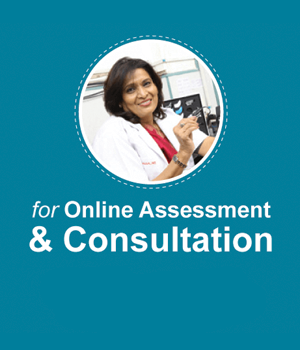



Cochlear Implant Journey
For the best possible outcomes for your child, there are 4 major pillars which you need to consider before going for a cochlear implant.
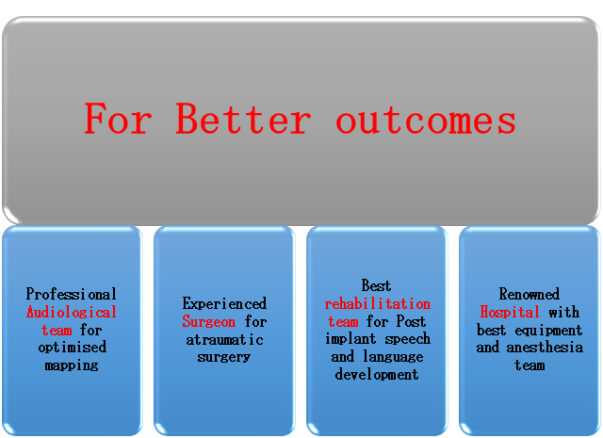
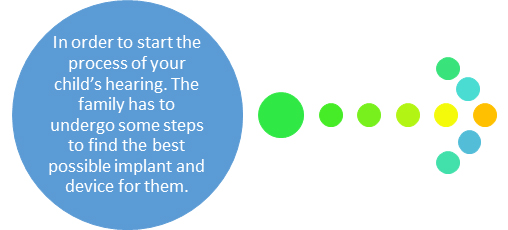
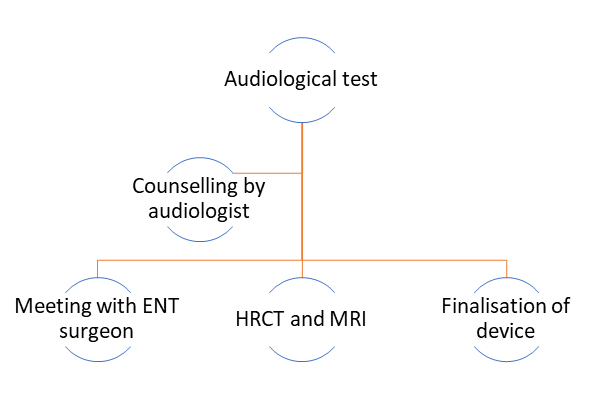
Audiological tests are very important as they will tell us about the type and degree of hearing loss. which will decide whether the child is a candidate for a cochlear implant or will benefit from hearing aids.
HRCT & MRI scan is important to know that the cochlea and auditory nerve are patent. I.e., is the structure anatomically correct.Audiological tests are very important as they will tell us about the type and degree of hearing loss. which will decide whether the child is a candidate for a cochlear implant or will benefit from hearing aids.
HRCT & MRI scan is important to know that the cochlea and auditory nerve are patent. I.e., is the structure anatomically correct.
Other routine tests involve blood tests, vaccinations, and RTPCR tests, etc.
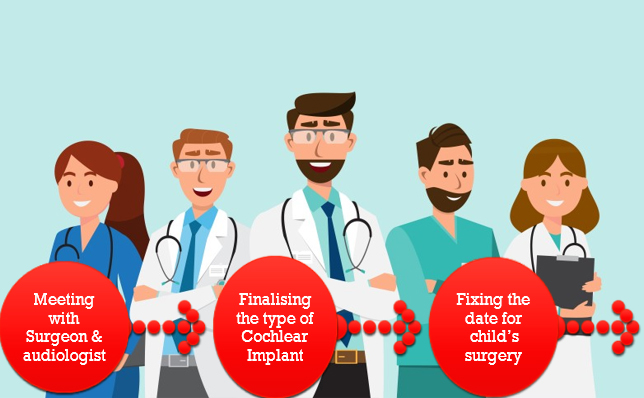
After getting all the tests and scans done, the reports will be evaluated by your ENT surgeon and audiologist, which will help them decide and recommend the ear to be implanted and the type of implant that would be good for your child.
The next step is to understand and decide between various sound processors and implants based on your child’s needs.
After finalising the device, the date will be fixed for your child’s surgery.

The surgery usually takes 2-3 hours per ear. Before that, the child will be in OT for preparation and anaesthesia. The total hospital stay is for 2-3 days where the child will be kept for observation.
After 7–10 days, the surgeon will be removing the stitch from the implant site and your audiologist will be handing over your kit and will be explaining the accessories, care, and maintenance.
After the implant site is healed, usually within 7–15 days, your Switch On with the audiologist will be planned. In this, the external device will be turned on for the first time and your child will have the perception of sound through the Cochlear implant.

After switching on the processor, your child requires mapping sessions, in which the audiologist will fine tune your external processor and set the current levels as per the child.
The child will also need to learn to listen and to speak. For which he will be taking Auditory Verbal Therapy, where the therapist will teach the child to listen to and recognise environmental sounds and speech sounds. Also, it is important to work on the child’s language and speech clarity with normal intonation pattern.
Inclusion of a child into normal schooling is very important after your child has hearing through a cochlear implant. Pre academic preparation will help to cater to the child’s needs and will help to bring the child to mainstream school.
Bilateral Cochlear Implant
“Two is always better than one.”
Hearing through two ears, as naturally intended, will help us to achieve the following:
- Less auditory stress:
- Ease of hearing
- Localisation
- Lateralisation
- Faster auditory processing
- Better speech understanding
- Speech understanding in noisy environments
- Reduced auditory fatigue
- Optimal and natural hearing
- It gets rid of the head shadow effect.
- Binaural squelch
- Binaural summation
- Importance of early implantation for outcomes
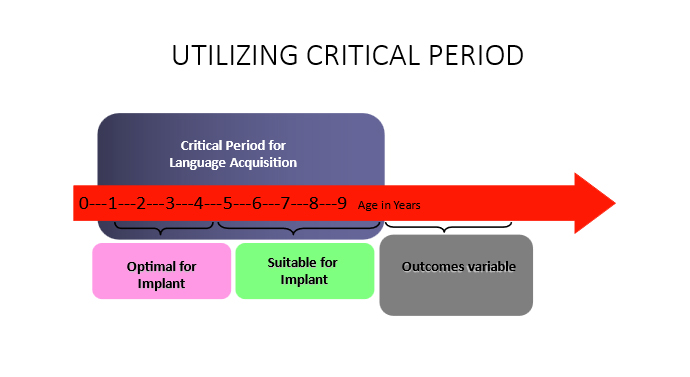
Providing Collaborative Care with Leading Hospitals







